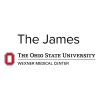Omega-3 Fatty Acids in Preventing Joint Symptoms in Patients With Stage I-III Breast Cancer Receiving Anastrozole, Exemestane, or Letrozole
Recurrent Breast Cancer, Stage IA Breast Cancer, Stage IB Breast Cancer

About this trial
This is an interventional prevention trial for Recurrent Breast Cancer focused on measuring Breast Cancer
Eligibility Criteria
Inclusion Criteria:
- Women diagnosed with breast cancer stages I-III initiating first adjuvant AI therapy with any of the Food and Drug Administration- (FDA) approved AIs (anastrozole, exemestane, letrozole)
- Concurrent gonadotropin-releasing hormone (GnRH) agonist therapy is allowed
- Concurrent breast related radiation therapy is allowed
- Prior tamoxifen use is allowed
- Prior chemotherapy is allowed
- History of osteoarthritis and/or fibromyalgia is allowed
- Ability to understand and the willingness to sign a written informed consent document
Exclusion Criteria:
- Metastatic malignancy of any kind
- Rheumatoid arthritis and other types of autoimmune and inflammatory joint disease, with the exception of osteoarthritis and fibromyalgia
- AI use > 2 weeks prior to study enrollment
- Known bleeding disorders
- History of diabetes mellitus, heart disease or TIA/stroke
- Current use of warfarin or other anticoagulants
- Uncontrolled intercurrent illness including, but not limited to, ongoing or active infection, symptomatic congestive heart failure, unstable angina pectoris, cardiac arrhythmia,or psychiatric illness/social situation that would limit compliance with study requirements
- Daily use of n-3 PUFA concentrates or capsules or regular or any other supplements that might interact with n-3 PUFA supplements within six months of study initiation; sporadic use of n-3 PUFA supplement may be eligible if there has been a 3-month washout period prior to randomization
- Pregnant or nursing women
- Known sensitivity or allergy to fish or fish oil
- Concurrent use of daily full dose aspirin (≥ 325 mg/day), nonsteroidal anti-inflammatory drugs (NSAIDs) or NSAID-containing products or steroids; one month washout period is required prior to randomization
- Unable to give informed consent
- In patients consenting for optional MRIs, any contraindication to MRI examination including but not limited to ferromagnetic metal in the body, pacemaker, or severe claustrophobia
Sites / Locations
- Ohio State University Medical Center
Arms of the Study
Arm 1
Arm 2
Arm 3
Arm 4
Arm 5
Arm 6
Experimental
Placebo Comparator
Experimental
Experimental
Experimental
Experimental
Arm I (omega-3 fatty acid supplement)
Arm II (placebo)
Clinical Assessments
Assessment of therapy complications
Magnetic Resonance Imaging
Correlative/special studies
Omega 3 Polyunsaturated Fatty Acids(n-3 PUFA)
Typical American Diet oils (TAD)
Brief Pain Inventory (BPI), Stanford's Health Assessment-Disability Index (HAS), FACT-B and endocrine subscale (FACT-ES)
Adverse events will be monitored by self-reporting of signs and symptoms. Patients will maintain a daily diary of time of supplement intake and any possible ill effects, with instructions to contact the PI or Research Nurse to discuss and manage any possible side effects.
Optional bilateral hand and wrist MRI imaging will be obtained
Enrolled participants will have peripheral blood samples drawn for plasma and RBC n-3 PUFA levels within 4 weeks of starting AI therapy.
Outcomes
Primary Outcome Measures
Secondary Outcome Measures
Full Information
1. Study Identification
2. Study Status
3. Sponsor/Collaborators
4. Oversight
5. Study Description
6. Conditions and Keywords
7. Study Design
8. Arms, Groups, and Interventions
10. Eligibility
12. IPD Sharing Statement
Learn more about this trial
